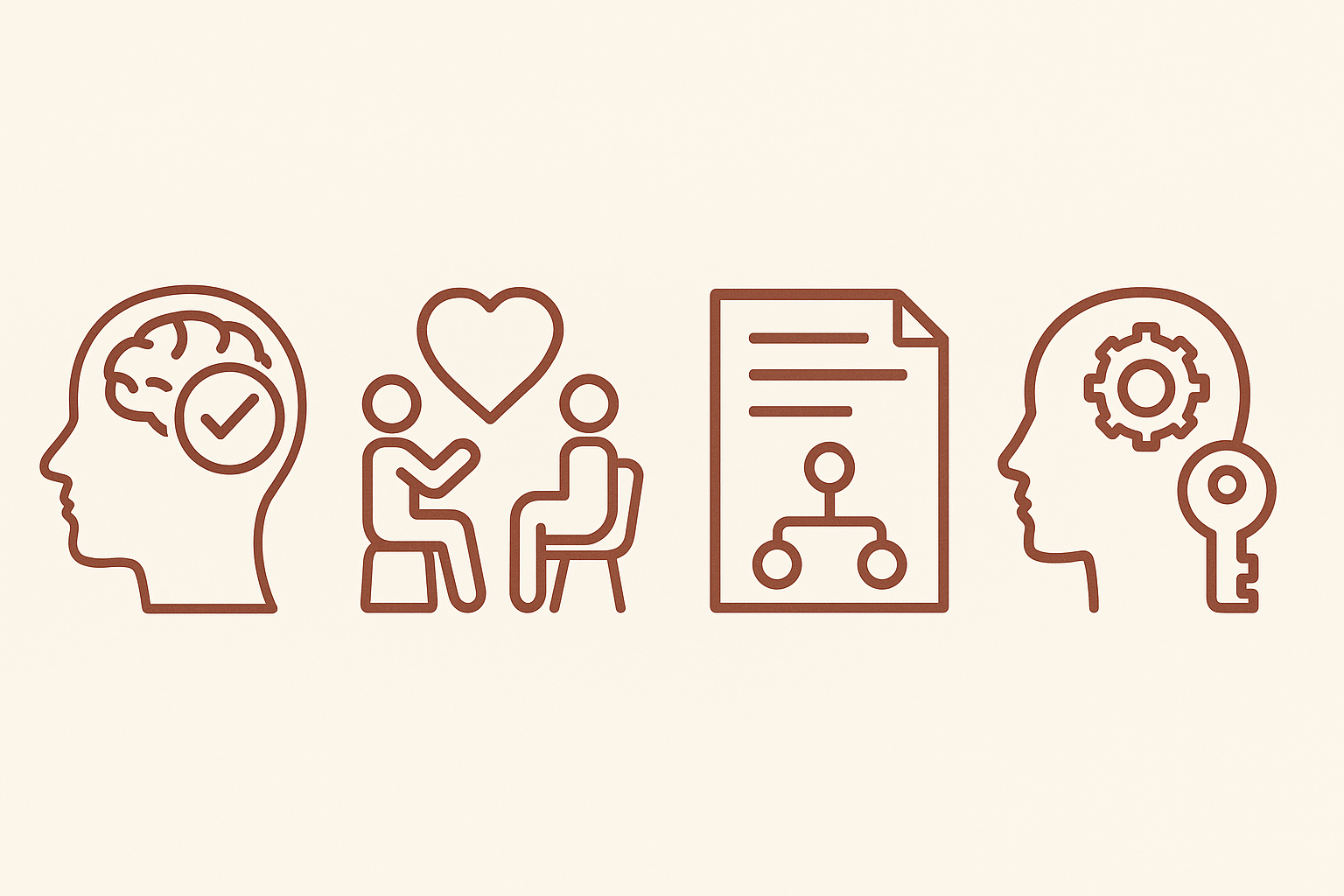
Therapy Styles
Below are the core therapy approaches you’ll find in PsycAI. Each style has a different ‘engine’ under the hood, and you can mix what fits.
Cognitive Behavioral Therapy (CBT)
CBT focuses on the loop between **thoughts, feelings, and behaviors**. It helps you spot unhelpful thinking patterns and test them against real evidence.
What it looks like:**
• Thought records and cognitive reframes
• Behavioral activation and small experiments
• Skills for anxiety, depression, and insomnia
How AI helps:** Step-by-step prompts for thought logs, gentle challenges to distortions, and micro-goals you can try today.
Humanistic (Person-Centered)
Humanistic therapy emphasizes **empathy, unconditional positive regard, and authenticity**. You’re viewed as a whole person with inner resources.
What it looks like:**
• Warm, non-judgmental reflection
• Clarifying values and personal growth
• Focusing on strengths and agency
How AI helps:** Consistent reflective listening, values exercises, and mood journaling that honors your pace and voice.
Psychodynamic
Psychodynamic work explores **underlying patterns**, early experiences, and defenses that shape current relationships and emotions.
What it looks like:**
• Spotting recurring themes and triggers
• Linking past and present reactions
• Increasing insight and emotional freedom
How AI helps:** Gentle pattern-finding questions, timelines of key events, and prompts that connect today’s feelings to earlier experiences.
Schema Therapy ("Schematic")
Schema Therapy identifies **deep, persistent life themes** (schemas) and the coping modes we switch into under stress.
What it looks like:**
• Naming schemas (e.g., abandonment, failure, perfectionism)
• Mode work (Vulnerable Child, Healthy Adult, etc.)
• Re-parenting exercises and limit-setting
How AI helps:** Quick schema screeners, mode check-ins during tough moments, and rehearsals for Healthy Adult responses.